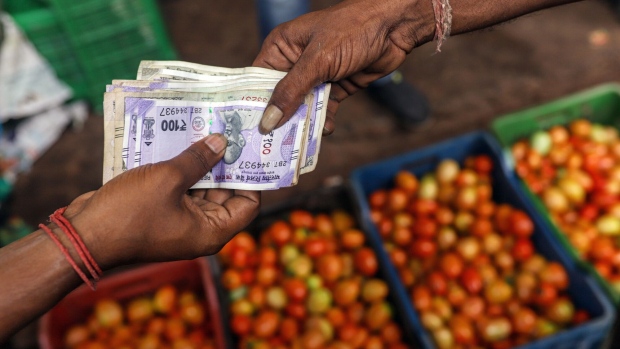Jun 18, 2024
India’s Inflation Moderating at a ‘Very’ Slow Pace, Das Says
, Bloomberg News

(Bloomberg) -- India’s inflation continues to be sticky, making it premature for the central bank to discuss a change in its monetary policy stance, Reserve Bank Governor Shaktikanta Das said Tuesday.
Even though core inflation reached a historical low, food prices remain high due to supply-side factors, Das said at an event by ET NOW television in Mumbai. “This last mile of disinflation journey is proving very sticky, arduous and very slow,” he said, adding the central bank will remain watchful.
The Reserve Bank of India’s monetary policy committee left the key benchmark rate unchanged in its meeting earlier this month. It also stuck to its relatively hawkish stance of “withdrawal of accommodation” to contain inflation.
“At the current juncture we thought it’s most appropriate to avoid any kind of adventurism and stick to the path of inflation that we had earlier laid out,” Das said. “It will be too premature to talk in terms of changing the stance. We need more evidence that inflation should moderate, and perhaps moderate faster.”
While inflation is easing, at 4.75% in May it is still above the central bank’s target 4%. India’s budget due next month will be closely watched to gauge if Prime Minister Narendra Modi pursues populist policies after his party lost its majority in national elections, leaving him to rely on allies to form the government.
The economy will continue to see strong economic growth in the current fiscal year on the back of a revival in rural demand and private investment, Das said. The robust growth is also supplemented by a strong external sector, growing urban demand and good monsoon expectations.
The Indian economy beat expectations to grow at over 8% in the financial year 2023-24 that ended March. The RBI has raised its economic growth projection for the current fiscal year through March 2025 to 7.2% from 7% earlier.
“The growth-inflation dynamic in India is very well placed. There is enough room for us to focus clearly on inflation, there is also enough room for economic growth to pick up,” Das said.
Here’s more from his speech:
- Current account deficit could be lower than 1% for 2023-24
- RBI will continue to build up reserves opportunistically as strong buffers help prevent volatility in the market
- “We do not have any specific number that this will be our forex reserves and then stop, because the economy is growing, financial activities are growing, and we would like our forex reserves to become even stronger”
- RBI monitoring all segments of loans, especially realty sector
- External demand for exports will continue to be strong
©2024 Bloomberg L.P.






